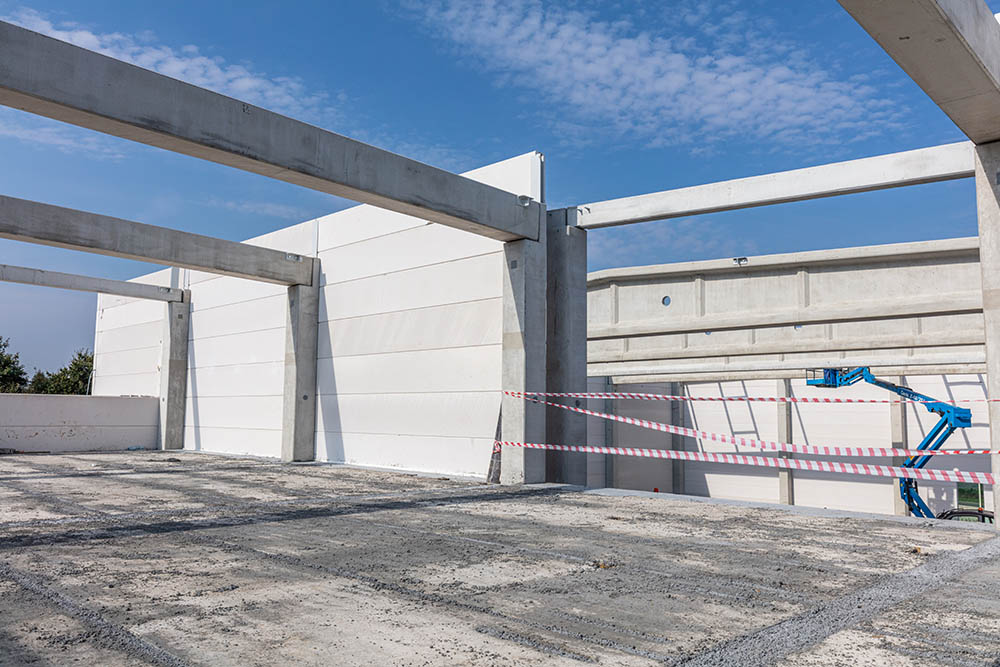Planning permission is often a grey area for companies looking to install flexible on-site structures. If you’re considering a modular or portable solution, understanding the planning permission rules for temporary buildings in 2025 is essential. The right approach can save you from costly delays, unnecessary paperwork, or even enforcement issues.
At Instant Space, we help clients navigate UK regulations and tailor our buildings to meet compliance standards. This article breaks down what counts as “temporary,” what permissions you may need, and how to plan ahead with confidence.
What Counts as a Temporary Building?
A temporary building is typically defined as a structure intended for short-term use. However, this definition isn’t based on how long the structure could last—Instant Space buildings often remain in place for 20+ years—but rather how long it is intended to remain on-site.
Temporary buildings often:
- Are modular, demountable or relocatable
- Do not require traditional foundations
- Serve specific short- to medium-term needs (e.g. warehousing, refurbishment projects, seasonal overflow)
- Are installed quickly and efficiently compared to permanent builds
Importantly, even a “temporary” building may still require planning permission depending on its size, location, and duration.
Do All Temporary Buildings Need Planning Permission?
Not always. There are situations where temporary buildings can be erected without planning permission, but several conditions must be met.
Under Part 4, Class A of the General Permitted Development Order (GDPO), temporary buildings may be allowed without full planning permission if:
- The structure is used for no more than 28 days in a calendar year
- It does not significantly affect the appearance of the site
- It does not obstruct public rights of way or access
- It does not exceed size restrictions relevant to the land designation
For many commercial and industrial clients, the 28-day rule is too limiting. In these cases, applying for planning permission is advised. Instant Space provides supporting documents to make this process straightforward.
Planning Permission for Temporary Buildings: Key Rules in 2025
In 2025, the planning landscape for temporary structures is shaped by both national policy and local authority interpretation. Here are the main considerations:
1. Duration of Use
If your structure will remain in place for more than 28 days, you are likely to require planning permission. Local authorities often grant permission for temporary buildings for 2 to 5 years.
Once this period ends, you can apply for renewal or reassessment, particularly if the building is still meeting a critical business function.
2. Location and Land Use
Planning officers will consider where the structure is placed. Important factors include:
- Proximity to boundaries or highways
- Impact on nearby residential areas
- Whether the site is within green belt, conservation areas or flood zones
Even temporary structures in these sensitive areas may be approved, but the justification must be strong.
3. Size and Scale
Larger buildings—especially those over 100 square metres—are more likely to trigger the need for formal planning approval. The bigger the footprint and the taller the eaves, the more scrutiny it will attract.
That said, Instant Space buildings are modular. We can often phase builds or adjust specifications to reduce planning complexity.
4. Building Use Class
If the building is used for warehousing (B8), light industrial (B1), or commercial purposes, this will influence the planning route. If you’re changing the use of the land, full planning may be required.
Providing a clear description of use and matching it with existing land class use is one of the best ways to keep your application simple.
5. Health, Safety, and Building Regulations
Planning permission is separate from building regulations approval, but both are needed in many cases. Building regulations cover structural integrity, fire safety, insulation performance, access, and more.
At Instant Space, our structures are engineered to comply with:
- BS EN 13782:2015 (temporary buildings)
- Wind and snow load requirements for your region
- Fire resistance and escape compliance for relevant use types
This compliance helps speed up approvals and gives peace of mind to your insurers and stakeholders.
How We Support Your Planning Process
We understand that applying for planning permission can feel like a barrier. That’s why Instant Space offers turnkey support, including:
- Technical drawings and specifications
- Wind and snow load calculations
- Site plans and elevations
- Design & access statements
- Referral to planning consultants if needed
With the right documentation, many of our clients secure planning approval in just a few weeks.
FAQs About Planning Permission for Temporary Buildings
Q: Can I install the building and apply afterwards?
A: Technically no—you should gain permission first unless you’re covered by the 28-day rule. Retrospective permission may be possible, but it carries risk.
Q: What if my structure is moveable, like a container or demountable canopy?
A: Even moveable structures may need planning permission if they are in place long-term or affect site layout or access.
Q: What happens when my temporary permission expires?
A: You can apply to extend or convert to permanent permission. If denied, the structure may need to be removed or modified.
Q: How long does the planning process take?
A: Most applications take 8–12 weeks, depending on the council’s workload and whether additional assessments are needed.
Planning Tips for Success
To give your planning application the best chance:
- Engage early with your local planning office
- Provide accurate, detailed site plans
- Justify the business need and timeframe
- Choose a building that is aesthetically in keeping with the surroundings
- Prepare to respond quickly to queries or site visits
The more comprehensive your submission, the more likely you’ll gain approval without delays.
Instant Space: Your Partner in Compliance
We don’t just deliver buildings, we help deliver peace of mind. From concept to installation, we make sure every temporary structure is planned with compliance in mind.
By understanding the planning permission rules for temporary buildings in 2025, you can move ahead confidently with a solution that fits your space, timeframe, and operational goals.
Let’s talk about your project. We’ll help you build quickly and legally, without cutting corners. Contact us today!

